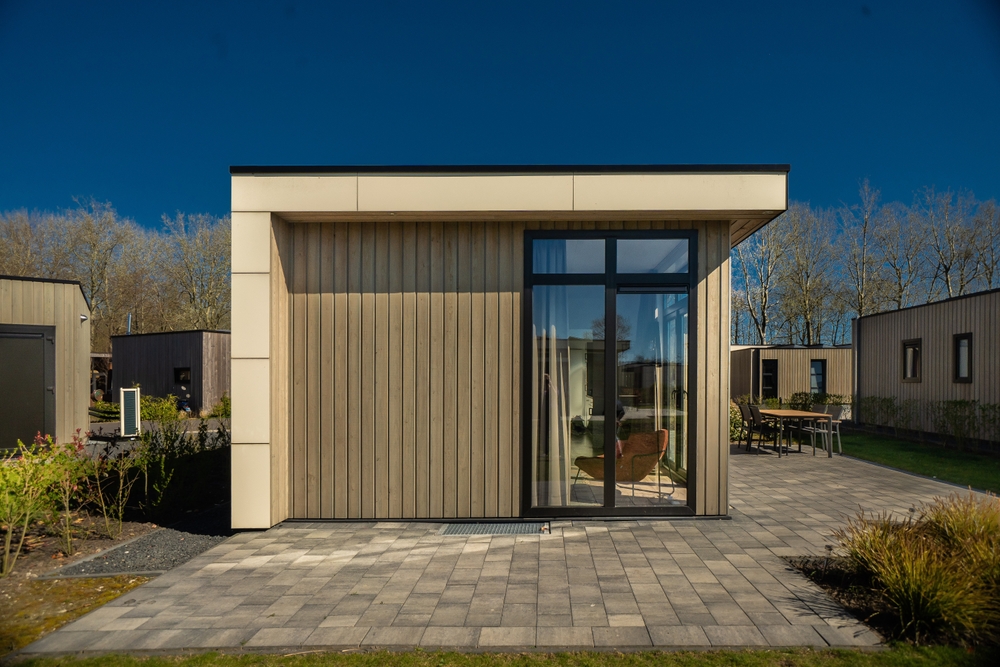In an era of soaring real estate prices and mounting environmental concerns, the tiny house movement is gaining momentum, offering an unconventional route to homeownership. These pint-sized dwellings, typically ranging from 100 to 400 square feet, are capturing the imagination of millennials, retirees, and eco-conscious individuals alike, all seeking a more affordable and sustainable way to put down roots.
The appeal of going small
Tiny homes are more than just downsized versions of traditional houses. They represent a shift in priorities, emphasizing simplicity, financial freedom, and environmental responsibility over square footage.
Affordability in a tough market
With median home prices in many urban areas stretching well beyond the reach of average earners, tiny homes offer a budget-friendly alternative. These compact dwellings typically cost between $30,000 and $60,000, a fraction of the price of a traditional home. The reduced upfront cost isn’t the only financial benefit; owners also enjoy significantly lower utility bills, property taxes, and maintenance expenses.
Many young professionals find that tiny homes allow them to become homeowners in their 20s or 30s, an achievement that might otherwise be out of reach in the current market. The affordability of tiny homes provides the stability of ownership without the burden of substantial debt.
Sustainability by design
The environmental benefits of tiny homes are as significant as their cost savings. With less space to heat, cool, and illuminate, these dwellings consume far fewer resources than their larger counterparts. Many tiny homeowners take sustainability a step further, incorporating solar panels, composting toilets, and rainwater collection systems into their designs.
Living in a tiny home can significantly reduce an individual’s carbon footprint. It’s not just about using less energy; it’s about consuming less overall and being more mindful of one’s impact on the planet.
Challenges of compact living
While the tiny house movement offers an innovative solution to the housing crisis, it’s not without its hurdles. Prospective tiny homeowners must navigate a complex landscape of zoning laws, building codes, and financing options.
Zoning and legal hurdles
Many municipalities have yet to adapt their zoning laws to accommodate tiny homes, leaving owners in a legal gray area. Some cities classify tiny homes on wheels as RVs, restricting where they can be parked long-term. Others struggle to categorize these dwellings within existing residential codes.
Finding a place to legally park a tiny home can be a significant challenge. It’s crucial for potential owners to thoroughly research local ordinances before investing in a tiny home.
Financing limitations
Traditional mortgages are often unavailable for tiny homes, forcing buyers to explore alternative financing options. Some turn to personal loans, RV loans, or manufacturer financing. Others choose to save and pay cash, avoiding debt altogether.
Adapting to less space
The transition to tiny living requires a significant lifestyle adjustment. Storage is at a premium, and multi-functional furniture becomes a necessity. For some, the forced downsizing is liberating; for others, it’s a constant challenge.
Tiny home dwellers must be intentional about what they bring into their space. However, many find that once they adapt, they realize how little they actually need to be happy.
The future of tiny
As housing costs continue to outpace wage growth in many parts of the country, the tiny house movement is poised for further expansion. Some cities are taking notice, creating specific ordinances to accommodate these alternative dwellings.
Fresno, California, for example, became one of the first major cities to specifically allow tiny houses in residential areas. Other municipalities are following suit, recognizing the potential of tiny homes to address affordable housing shortages.
The tiny house movement is also inspiring innovation in the broader housing market. Developers are incorporating “micro-apartments” in urban areas, while some suburbs are relaxing rules on accessory dwelling units, allowing homeowners to add tiny homes to their properties.
A small solution to big problems
Tiny homes offer more than just an alternative path to homeownership; they represent a reimagining of the American dream. In a world grappling with housing affordability, environmental sustainability, and the desire for a simpler life, these small dwellings are making a big impact.
For many, a tiny home isn’t just a house; it’s a statement about personal values. It represents freedom, sustainability, and a home that’s truly one’s own.
While not for everyone, the tiny house movement is proving that when it comes to achieving the dream of homeownership, sometimes less really is more.
This story was created using AI technology.

















